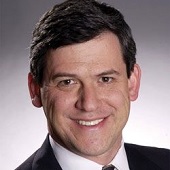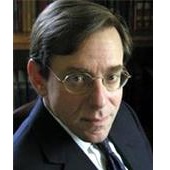Muslims in America (and Europe)
Are Muslim communities in the U.S. better off than their European counterparts?
February 22, 2006
Why has there been no second September 11 in the United States? In the weeks and months following that day, it was universally proclaimed that more attacks were on the way that would wreak a greater devastation. Obviously, this has not happened. There are a number of possible explanations.
The first reason is that the United States has simply become too difficult a place for terrorists to operate, in part as a result of changes the U.S. government has made. For example, immigration controls have been significantly tightened, making it considerably more difficult to gain entry to the United States, especially for individuals from Muslim countries.
Another partial explanation is that the jihadists are getting what they need elsewhere. By bloodying the United States in Iraq, they are fulfilling their requirement to demonstrate to the umma or the community of believers that they are what they claim to be — the champions of Muslim rights.
Alongside these considerations must also be recognition that U.S. Muslim community has been inhospitable to jihadists — and, thus far, largely immune to the radicalization going on elsewhere.
One of the stunning contributions of the 9/11 Commission Report was its documentation of the solitary path of the hijackers while they were in the United States. They appear to have had more contact and support with individuals from foreign embassies than with U.S. Muslims.
If the Commission is correct, their operations were pathbreaking in that they were able to live off the land and stage their attacks without having a cell of local activists to prepare the ground for them. That they could pull off such attacks is obviously bad news. That no local network was found to support them is good news.
That is not to say that there are no terrorists in the United States — or that the nation has been fully protected from the virus of the jihadist ideology. Some of those closest to the intelligence and law enforcement efforts of the last four years are convinced that the FBI is still far from mastering the job of domestic intelligence gathering and is failing to find the trail of operatives who are here.
The chief reason why American Muslims have been relatively immune to the call of the new umma is that their community does not resemble its counterparts in Europe. The United States has, for the most part, integrated Muslims in much the same way it has integrated other immigrant groups.
The first wave of Arab immigrants to the United States were primarily Christians from Lebanon — and many of the Muslim Arabs who arrived here afterward were middle class, relatively well-educated and worldly in their outlook.
Later Muslim immigrants from South Asia were less prosperous, but many came equipped with some English-language skills and often a background in trade. These groups followed a well-established path of adaptation and integration — and their children spoke English, attended public schools and made their way in American society.
By contrast, European countries had homogeneous societies unfamiliar with the habits of social integration. And the first two generations of Muslim immigrants kept to themselves, retaining their native languages and customs — a situation that engendered an alienating atmosphere for their children.
The degree of Muslim integration in the United States is revealed by their average household income, which is higher than that of the general population. Two-thirds of Muslim households earn more than $50,000 per year as compared to a median U.S. household income of $42,158 — and a quarter of Muslim households earn $100,000 or more.
This is undoubtedly both a cause and effect of their high level of educational attainment: More than a third of Muslim Americans have advanced degrees, compared to 8.6% for the population as a whole.
Unlike their ghettoized fellow Muslims in Europe, American Muslims tend to live in improving neighborhoods in central cities and in the suburbs.
On the whole, residential segregation is low, although it appears to be increasing as Muslims begin to gather more in their own enclaves. It is unclear whether this represents a durable trend, but it could be that integration of Muslims into U.S. society is slowing down.
Perhaps the starkest contrast between the Muslim communities on the two sides of the Atlantic involves political activity. While Muslims in the United States have yet to be represented in Congress, the electoral importance of this increasingly organized community has grown tremendously.
In the 2000 and 2004 elections, the Muslim community in Michigan was identified as a key constituency in a battleground state that could conceivably affect the outcome of the presidential vote.
Senior political operatives of both parties lined up to meet with community leaders in a way that would be unimaginable in most of Europe.
Similarly, there has been growth in political activism, in the form of grassroots organization, lobbying, voter registration and the number of delegates to national conventions and candidates for office. This is a good news story.
Even though the period since September 11 has been the most difficult one in the history of the American Muslim community with a wave of anti-Muslim sentiment and 1,500 reported hate crimes in 2004 alone, many Muslims clearly feel that there are political solutions for their concerns. As a result, these individuals are unlikely to withdraw from U.S. society or, worse, lash out at it.
But according to Marcia Hermansen, a Muslim professor of Islamic studies at Loyola University, "Quite a number of Muslim youth in America are becoming rigidly conservative and condemnatory of their peers, their parents and all who are not within a narrow ideological band."
While the danger of radical outsiders coming into the country will always exist, the chance of a successful attack will be magnified if U.S. citizens link up with them — or if groups of American self-starters emerge.
The question now is whether conditions are developing that would make those events more likely.
Read previous
China: Beyond the Growth Figures
February 21, 2006

